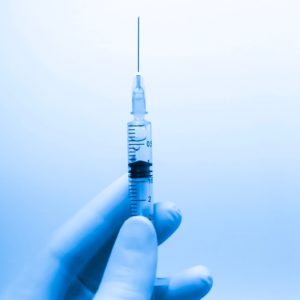In his recent State of the Union address, President Biden called for a $35 cap on out-of-pocket costs for insulin, which, he argued, is wildly overpriced.
Biden’s focus on pricing is standard fare for politicians who don’t understand basic facts about the market for pharmaceuticals. Three large companies — Eli Lilly, Sanofi and Novo Nordisk — control 90 percent of the very competitive insulin market in the United States. Lilly recently reported that its Humalog insulin price had dropped 10 percent over the last five years. Novo Nordisk reported last month that its insulin prices have dropped by double digits in every year since 2017. In 2019, the then-CEO of Sanofi testified to a Senate committee that the price for its flagship insulin product, Lantus, had declined 30 percent since 2012.
Wait, the reader may ask, “what about all those headlines about skyrocketing insulin prices?” Many of these headlines were deceptive because they failed to acknowledge the difference between list prices and net prices.
I have bought a few cars in my life, and I always have a similar experience. I look around the lot, browsing the cars with their “sticker” prices glued to the window. Inevitably a salesperson will approach me, and I say, “I like this particular car, but the price is a little more than what I wanted to spend.” The salesperson typically replies, “Let me talk to my manager, there may be some wiggle room on the price.” When the salesperson returns, he tells me I am “in luck” and that discounts totaling a few thousand dollars are available. So, the sticker price is not the real price.
In the drug market, the difference between sticker prices and actual prices is dramatic. Using the Sanofi example, its insulin sticker prices rose 140 percent between 2012 and 2019, but the net prices — the prices actually paid by customers — dropped 41 percent.
Why would sticker prices and net prices for insulin be so wildly out of sync? The answer has to do with the mechanics of how drug makers pass discounts to health insurance plans — through rebates or fees that are linked to the sticker price.
For simplicity’s sake, let’s say one drug company is selling insulin at a sticker price of $500 but, to get a health plan’s business the company agrees to a 20 percent discount, or $400 per prescription. At that price, the drug maker would need to write a $100 check to the health plan each time one of its insulin prescriptions is sold. Unlike the market for cars, drug discounts are not provided at the point of sale, they are provided through payments after a drug maker confirms the actual sales numbers. Drug makers write health plans a check — retroactively — to meet the promised discount.
If you are a competing insulin company, and you also want to win the health plan’s business, you have two options to beat your competitor’s price. You can simply offer a deeper discount than your competitor, say 25 percent instead of 20 percent, requiring a per-prescription payment of $125. But you have another option: you can raise the sticker price.
Here is how that works. Raising the sticker price to $600, not $500, and also matching the competitor’s net price of $400 per prescription, would generate a payment of $200 for each prescription, double your competitor’s payment. This payment system keeps net prices down but is driving sticker prices up because drug makers need head room to offer more generous rebates and fees to health plans.
So, who is harmed if health plans are getting cheaper drugs, and drug makers are selling more drugs? This system disadvantages patients who pay sticker prices and do not have access to negotiated discounts.
These patients fall into two categories. The most obvious are the uninsured who have no insurance company to negotiate down their price. The second group are those who have insurance but must pay high coinsurance, or a deductible, before their coverage kicks in. Many times, when patients are meeting their coinsurance or deductible, they pay sticker prices. The result, as Sanofi’s then-CEO testified, is that “average out-of-pocket costs for (insulin) patients with commercial insurance and Medicare … has risen 60 percent.”
Biden’s proposal would help this second group by capping coinsurance at $35 but it would do nothing for the uninsured who arguably struggle the most to pay for medicine. But the Biden proposal at least provides hope that politicians are starting to understand that out-of-pocket charges, not drug prices, are now patients’ biggest challenge.

